Surprising fact: Morocco’s landscapes can show four very different climates on the same day — coastal breeze, sun-baked plains, snowy peaks, and Saharan dunes all within a few hours’ drive.
I write this guide from years on the road, so I can point you at the months that match your style and weather tolerance. I’ll map the year so you can see when the coast stays mild, when inland cities sizzle, and when the desert cools enough for comfortable nights.
Expect clear contrasts in temperatures between the Atlantic coast, high mountains, and the desert. Spring and fall are gentle for Marrakech and hiking in the High Atlas. Winters bring surf swell along the coast, while summer pushes inland cities toward 100°F (38°C).
Key Takeaways
- I outline the year so you can choose months that suit your plans and heat tolerance.
- Spring and fall are ideal for city sightseeing and mountain hikes.
- Coastal summers stay temperate; winter offers the best surf and events.
- Plan Sahara trips for shoulder months; camps often close in peak heat.
- Watch Ramadan dates—daytime routines affect dining and openings.
How I decide the best time to visit Morocco
Choosing months comes down to what I want to do and which areas offer the right conditions.
I start by listing core goals for the trip: city wandering, surfing, desert nights, or mountain hikes. Then I match activities to months when the weather and access align.
Spring (March–May) and fall (September–November) often give the mildest balance across coast, cities, and highlands. Inland summers can exceed 100°F (38°C), while the Atlantic stays cooler with steady breezes.
I watch practical details next: festival dates, school holiday crowds, and whether Sahara camps open in a given month. I also weigh daytime highs and cold desert nights so days and nights fit my plans.
| Area | Great months | Typical conditions | Top activities |
|---|---|---|---|
| Atlantic coast | Jun–Sep, Sep | Cooler, breezy, fog on some mornings | Surf, beaches, coastal culture |
| Inland cities | Mar–May, Sep–Nov | Mild days, warm afternoons, cooler nights | Markets, rooftops, museums |
| High Atlas | Apr–Jun, Sep–Nov | Clear trails, pleasant hiking temps | Day hikes, multi-day treks, ski in winter |
| Sahara | May, Oct | Comfortable days, cold nights; camps open | Dune camps, stargazing, camel treks |
I aim for months that balance activities, crowds, and recovery—so my days feel adventurous but not exhausting.
Morocco’s seasons at a glance: weather, crowds, and trip styles
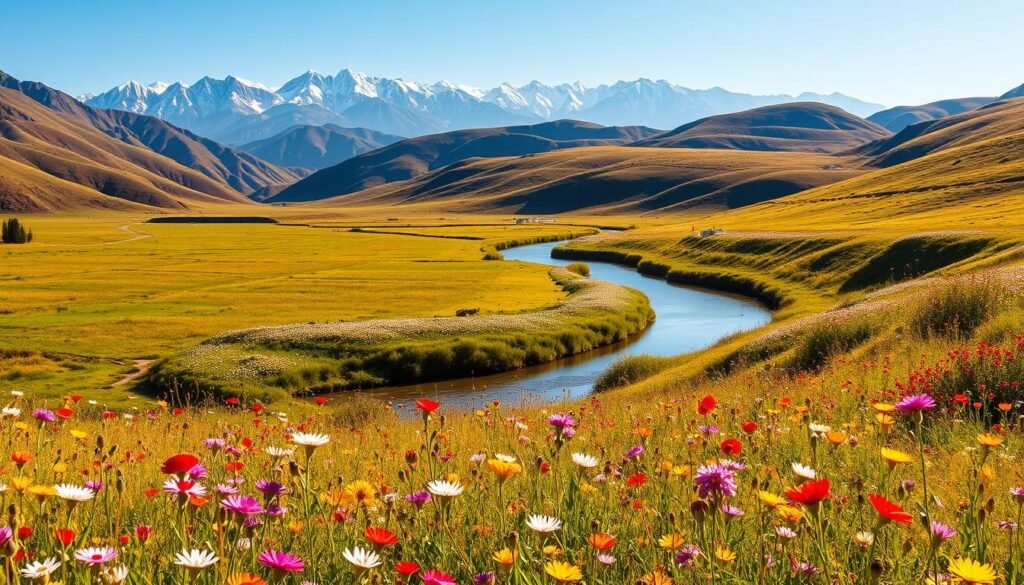
Each season here offers a clear personality—perfect for matching a trip to mood and energy.
Spring (March–May): Mild temps, blooming valleys, ideal for cities and hikes
Spring brings wildflowers and comfortable hiking in the High Atlas and Anti-Atlas. I time city wandering around mild temperatures, splitting days between medina streets and half-day treks.
May also hosts the rose harvest in M’Goun Valley, and the light makes urban rooftops extra pleasant.
Summer (June–August): Coastal breezes, inland heat, beach time and music festivals
Summer means inland highs often exceed 100°F, so I stick to Atlantic towns where the coast stays near 80°F with cooling breezes and morning fog.
Water warms, surf mellows for learners, and marquee music festivals fill the evenings.
Fall (September–November): Comfortable days, thinner crowds, great all-round conditions
September can be a standout: long sunlit days and quieter beaches after the August rush. I use fall for multi-stop trips that mix cities, coast, and light trekking.You can learn more about best-time-to-visit-vietnam.
By October the Sahara cools and crowds ease, making it easier to move between regions.
Winter (December–February): Cool, wet up north, surf swells and snow-capped Atlas
Winter brings cold, wet spells in the north and peak Atlantic swells for surfers. The High Atlas holds snow and even skiing in places like Oukaimeden and Ifrane, though minor roads can close.
Through the year I shape my plans around these shifts — matching the season to the style of trip I want.You can learn more about best-islands-to-visit.
Month-by-month guide to weather, festivals, and conditions
Each month brings a distinct mix of climate and culture worth noting. I walk through the calendar below with short pointers on temperatures, key events, and where I head for the best activities.
January
Coolest and often wettest. Daytime highs sit near 50–68°F. Cities are quiet; I use this for relaxed medina walks and day trips into the Sahara Desert when the sun warms the dunes. Yennayer (Amazigh new year) offers local color.
February–March
February brings crisper air and fewer showers. High Atlas treks show snow-capped peaks. Tafraoute’s Almond Blossom can bloom late February or March.
March opens spring blooms and lush valleys. I aim for Marrakesh or Fes and sometimes time a detour to the International Nomad festival in M’Hamid.
April–May
April heats up; expect Easter crowds and superb hiking in the Mid Atlas. Fes hosts a notable Sufi festival, and the Marathon des Sables runs in the desert.
May is prime for multi-day treks and the Festival of the Roses in M’Goun Valley. Sahara days remain comfortable before summer spikes.You can learn more about best-time-to-visit-scotland
“I plan around festivals and shifting weather so each month fits my chosen activities.”
Where to go when: coast, cities, desert, and mountains
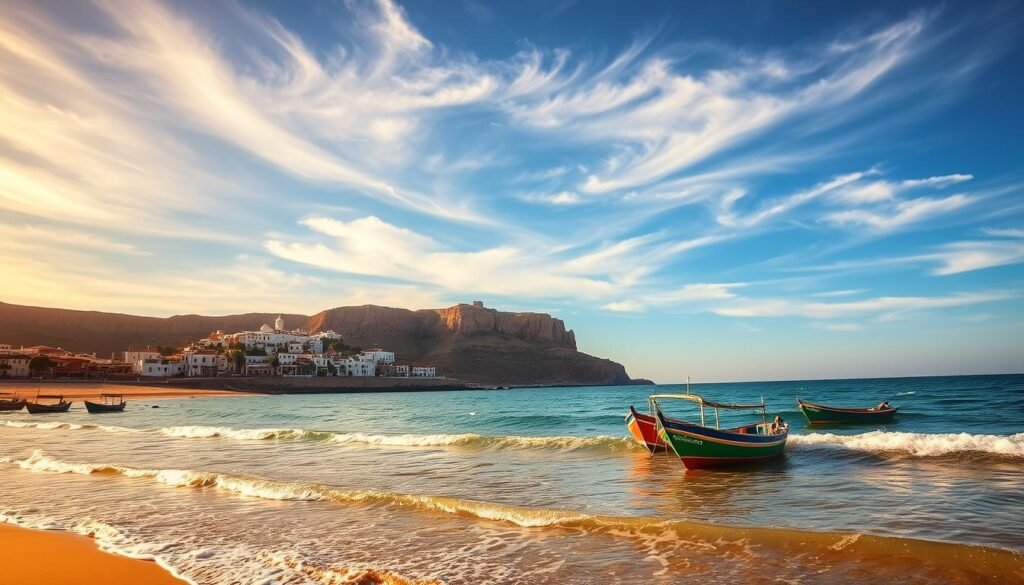
I pick regions by matching weather windows with the activities I want. That helps me balance crowds, festival dates, and local conditions.
Coast and beaches
I favor the coast in summer for steady breezes. Essaouira and Taghazout work well for surf lessons.
Agadir and Tangier offer long beaches and easy town access. Kitesurfing winds run April–September, and Dakhla shines late September.
Imperial cities and culture
I head to cities in spring and fall. Marrakech, Fes, Rabat, and Casablanca feel best then for museums, markets, and a festival or two.You can learn more about best-time-to-visit-new-orleans.
In high heat I slow my pace with siestas and cool riads.
Sahara Desert
The desert is most comfortable in spring and fall. Camps often close in peak summer because of extreme heat.
Winter nights can be freezing; I pack layers and a scarf for wind and sand.
Atlas Mountains
For the atlas mountains I aim April–June and September–November for the gentlest trails. The High Atlas clears for great hiking.
Winter brings snow and alpine options like Oukaimeden and Ifrane.
| Region | Best season | Why go |
|---|---|---|
| Coast | June–Sep | Beach days, surf lessons, kitesurf winds |
| Imperial cities | Spring/Fall | Comfortable temps, festivals, markets |
| Sahara | May & Oct | Cool days, open camps, stargazing |
| Atlas Mountains | Apr–Jun, Sep–Nov | Clear trails, wildflowers, winter skiing |
“I match each place to a season so I get the most from coast, city, desert, or ridge without fighting the weather.”
The best time to visit Morocco for your trip style
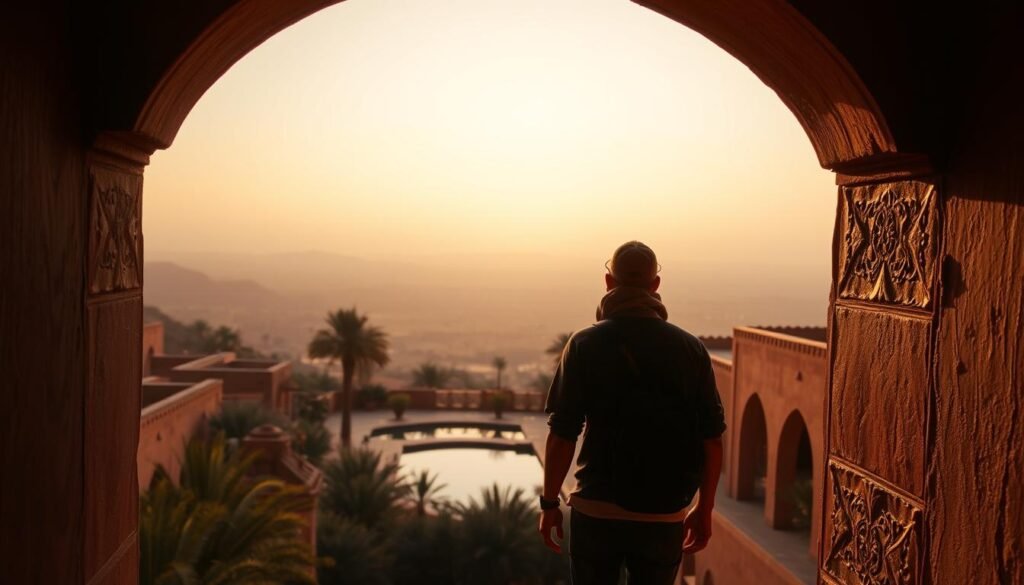
I map choices around what I want to feel each day—cool mornings on a rooftop or salty wind on a beach. That core activity guides the rest of the plan.
For warm-but-not-hot weather and fewer crowds: spring and fall sweet spots
Spring and fall give mild temperatures and lighter crowds. I pick late March–May or September–October for long walking tours and alfresco dining.
For beaches and water activities: June–September on the Atlantic and Med
June–September brings steady winds, warmer water, and mellow surf. Beach towns fill with life and seaside promenades stay lively in the evenings.
For hiking and outdoor adventures: April–June and September–November
I schedule hiking in April–June and again in September–November. Trails clear, elevation days feel comfortable, and mountain light is excellent for photos.
For festivals and culture: late spring through summer, select fall highlights
Music and arts festivals stack from late spring into summer. I check dates early and book riads when festivals overlap school holidays.
“I build a trip around one key activity, then add coast or city time so each day feels balanced.”
| Trip focus | Ideal season | Why |
|---|---|---|
| City & culture | Spring / Fall | Mild temperatures, fewer crowds, festival access |
| Beaches & water sports | Jun–Sep | Warm water, steady wind, lively evenings |
| Hiking & outdoors | Apr–Jun, Sep–Nov | Clear trails, comfortable highs, good light |
| Desert trips | May & Oct | Camps open, cooler days, great nights |
For a deeper planning checklist and calendar, see my guide on the best time to visit Morocco. It helps me lock dates for specific activities and avoid peak crowds.
Key events and festivals by season
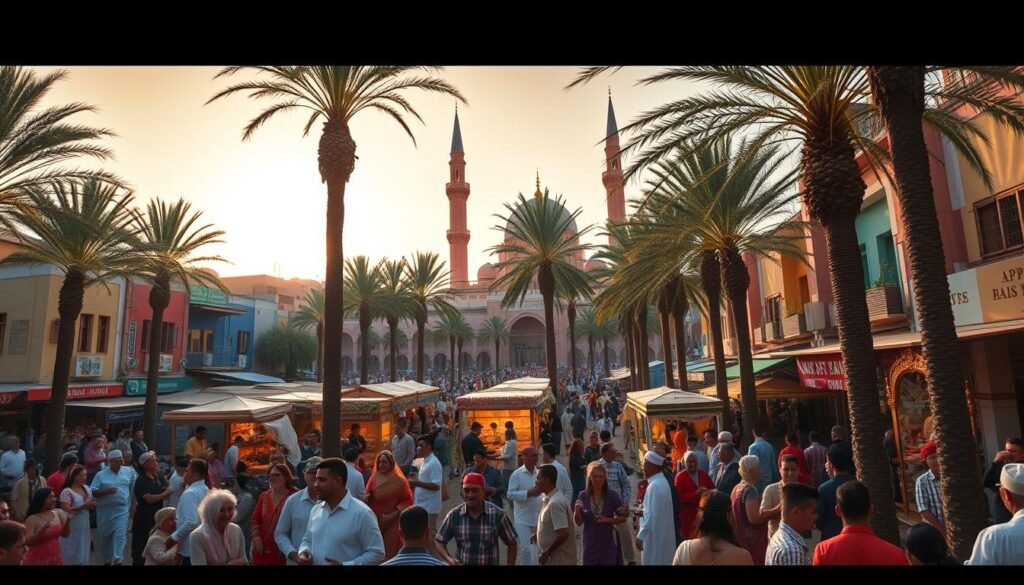
From mountain rites to coastal concerts, I plan around the calendar of public festivities.
Winter highlights
In early January I join Yennayer, the Amazigh new year, for local rites and communal meals.
Winter also brings Atlantic surf competitions in Taghazout and other coastal spots.
Spring spotlights
Spring blooms with the Sufi festival in Fes and the Marathon des Sables in the Sahara.
I time visits for Tafraoute’s almond blossom and the M’Goun rose celebrations.
Summer stages
Summer is heavy on music: Essaouira’s Gnaoua and World Music events, Rabat’s Mawazine, Jazzablanca, and Asilah’s arts scene.
Sefrou’s Cherry Festival adds local flavor to city nights.
Fall gatherings
In autumn I watch the Imilchil Marriage Festival and go birding at Oualidia and Souss-Massa during migration days.
October marks date harvest festivities in many oasis towns.
“Check dates each year—major events can shift within a seasonal window.”
- Tip: I book riads early for any city festival and plan transport around peak days.
Practical timing tips: weather, Ramadan, dress, and crowds
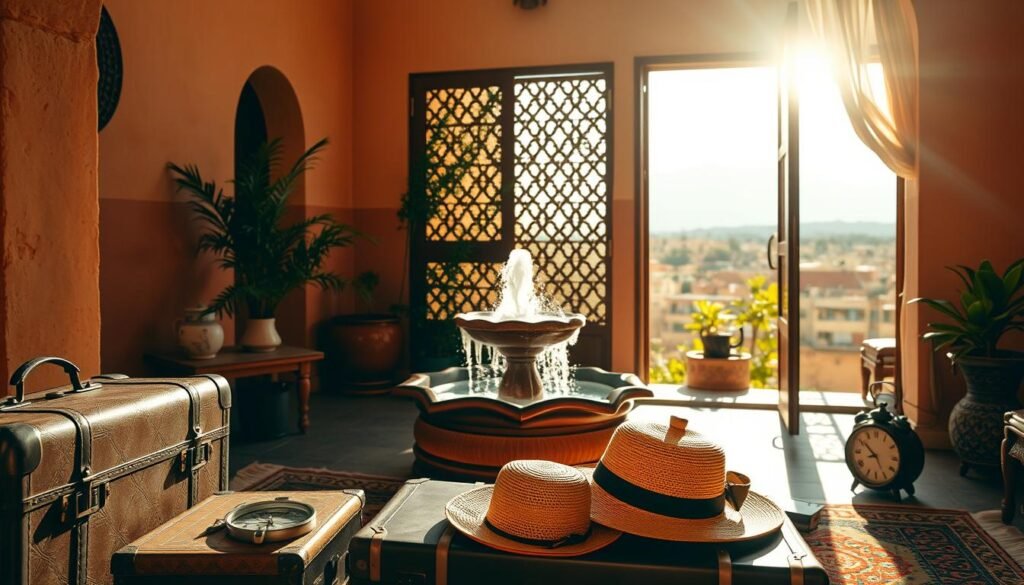
I plan every trip around simple rules that keep days pleasant and nights comfortable.
Ramadan each year: Dates shift, and daytime dining can be limited. I rely on hotel restaurants for lunches and make my main meal at iftar. I also time sightseeing for early mornings or after sunset when markets pulse with locals and food stalls reopen.
Ramadan planning
During Ramadan I move walking tours to cooler mornings. Nights feel lively and are great for sampling street food after iftar.
“I plan bigger meals for iftar and use hotels for daytime dining; the rhythm of the day changes, but so does the local warmth.”
Crowd strategy and booking windows
October–April draws many international travelers, while June–August sees domestic surges along the coast. I skip late-December city peaks and avoid mid-August beaches if I want quieter days.
I book riads and desert camps months ahead when my months overlap festivals or school holidays. That saves stress and keeps transfers manageable.
Packing and dress for varied areas
I pack layers: breathable shirts for hot day tours, a warm jacket for mountain and desert nights, and a scarf for sand and sun. In cities I wear smart casual; in rural and religious sites I dress more modestly out of respect.
| Issue | My action | Why it helps |
|---|---|---|
| Ramadan | Eat at hotels, plan evenings for markets | Ensures meals and lively nightlife |
| Peak crowds | Avoid late Dec & mid-Aug; book early | Fewer lines, better riad choices |
| Rain & cold nights | Check forecasts; pack waterproof layer | Flexible indoor plans; comfortable nights |
| Heat-sensitive travelers | Schedule mid-day rests, rooftop dinners | Manageable days; safer outdoors |
Final practical note: I split my route by areas—coast, cities, mountains, desert—and build realistic transfer days. That balance keeps each day relaxed and focused on the experiences I came for.
For a detailed planning checklist and calendar I consult a dedicated guide on the best time to visit.
Conclusion
A clear season choice makes logistics easier and lets each day deliver what you came for. For balance, I favor spring and fall: mild temperatures across cities and the High Atlas, and gentler mountains hikes that suit most travelers.
For the sahara desert I aim for May or October for warm days and crisp, starry nights. Hikers find April–June and September–November ideal in the atlas mountains.
Summer is my beach season—Atlantic breezes and warm water. In winter I trade long city days for cafes, surf swells, and snowy peaks.
Use this guide to match your main activity with the season, plan early starts and midday breaks, and line up a music festival or cultural highlight for a truly memorable trip.


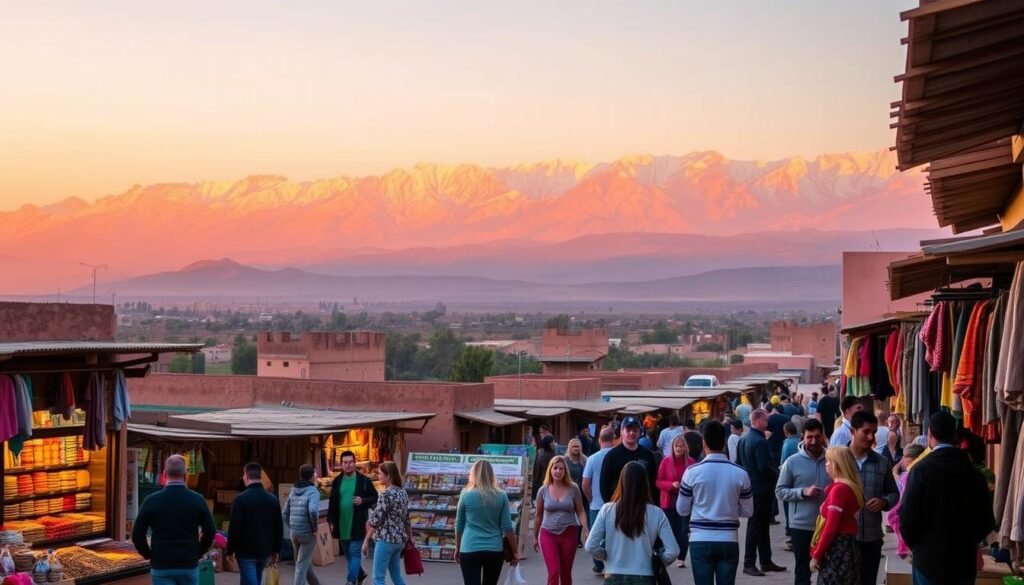



















One Response